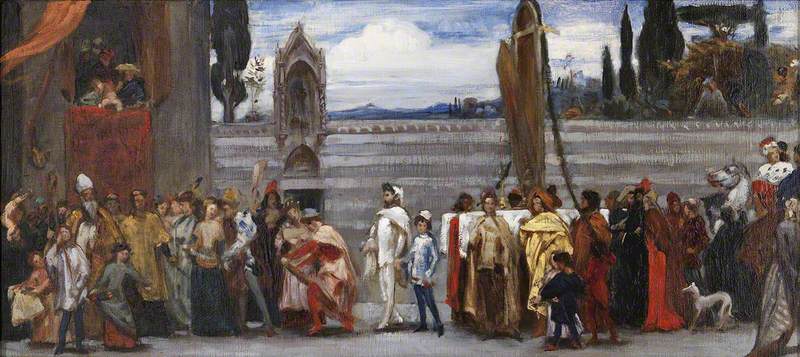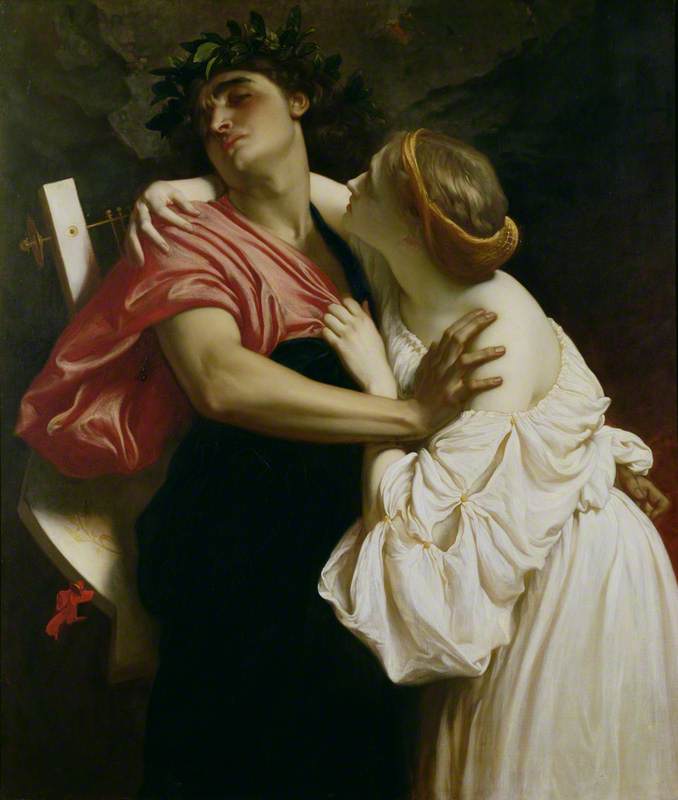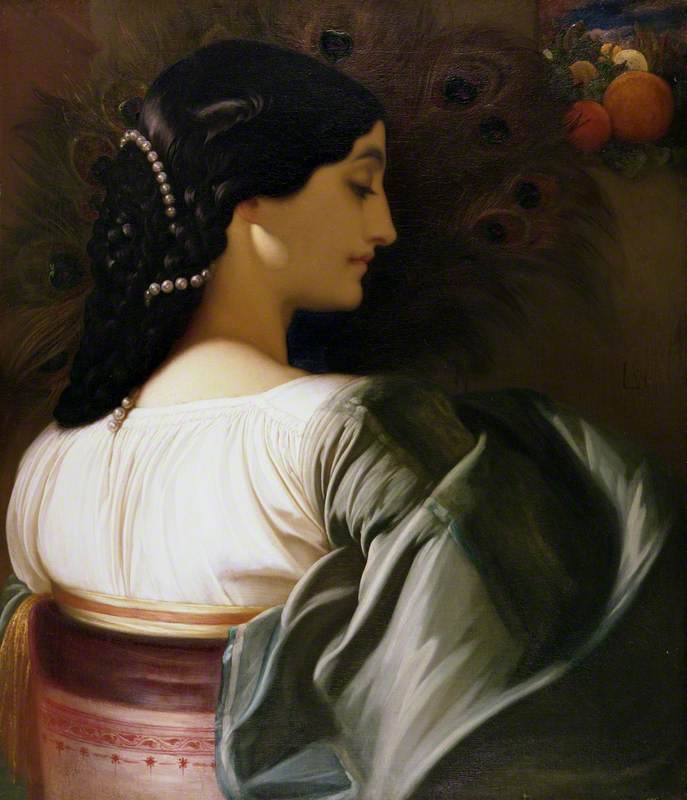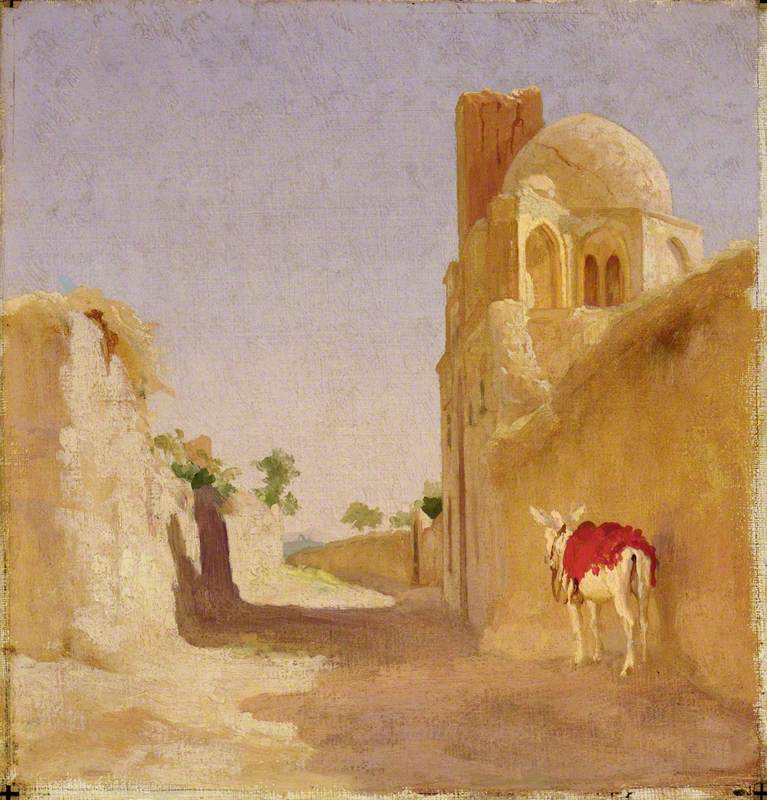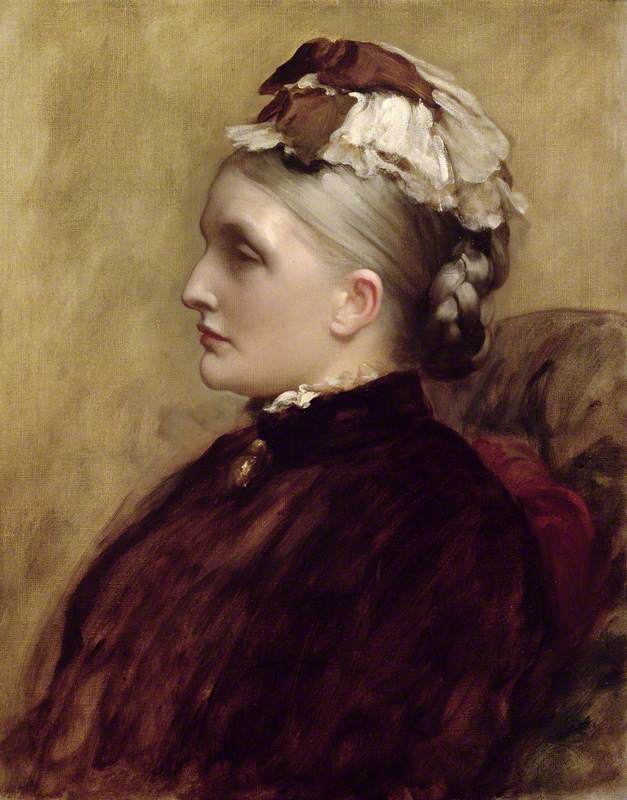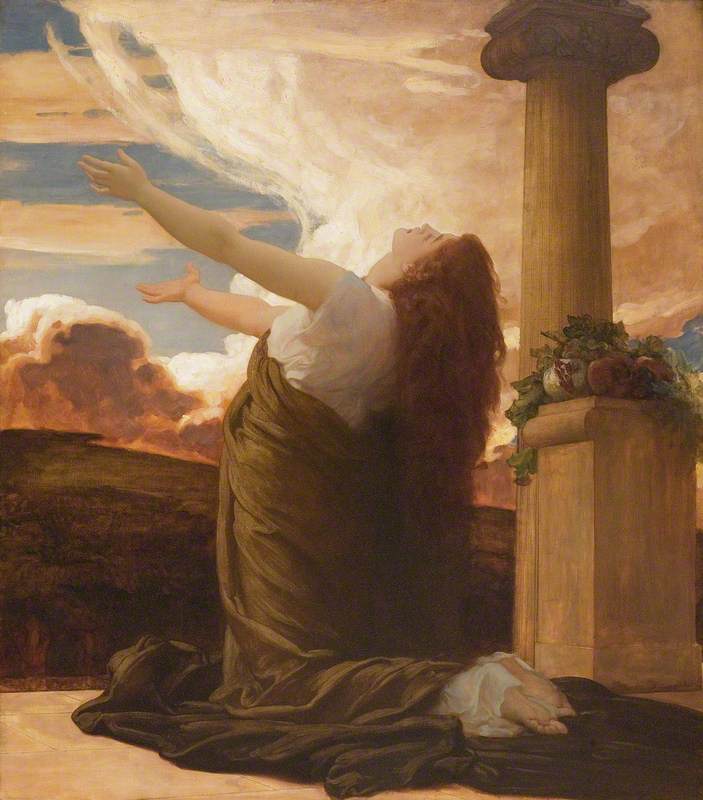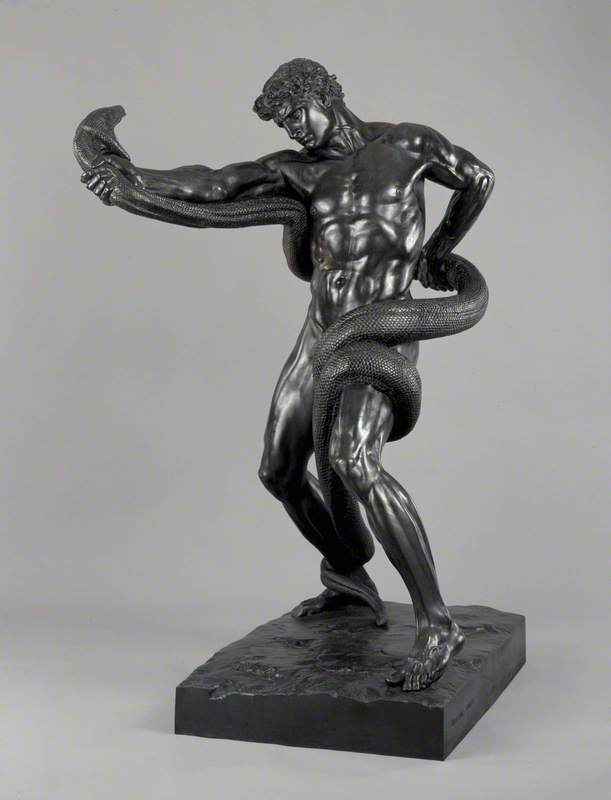Frederic Leighton died in 1896 and his entire collection was sold at an auction by Christie’s, leaving the house as a virtual empty shell. It fell to Leighton’s near neighbour, Emilie Barrington and the Leighton House Committee, newly formed in 1897, to re-assemble a representative body of some of Leighton’s artworks as well as art pieces that he collected. These remain the core of the collections today and work is ongoing to retrieve items from his original collection.
Art Unlocked is an online talk series by Art UK in collaboration with Bloomberg Philanthropies. This Curation is based on a talk by Hannah Lund, Assistant Curator at Leighton House, on 18th January 2023. You can watch a recording of the talk on Art UK's YouTube channel.
-
Colour Sketch for 'Cimabue's Celebrated Madonna is Carried in Procession through the Streets of Florence', 1854
Colour Sketch for 'Cimabue's Celebrated Madonna is Carried in Procession through the Streets of Florence', 1854In 1855 Leighton exhibited his debut work at the Royal Academy in London, Cimabue’s Celebrated Madonna is Carried in Procession through the streets of Florence. The work caused a sensation and was immediately purchased by Queen Victoria for £600. This painting is a small colour study for this larger work. Leighton produced colour studies for all of his major paintings as part of a complex and laborious process of preparation he undertook before embarking on the final piece. This study is particularly well finished, showing the careful pains Leighton went to with this picture, which was to introduce him to the British art world.
Acquired in 2012 with the generous support of the Art Fund and the Friends of Leighton House and Sambourne House
Frederic Leighton (1830–1896)
Oil on canvas
H 28 x W 63 cm
The Royal Borough of Kensington and Chelsea Culture Service, Leighton House Museum
-
Orpheus and Eurydice
Orpheus and Eurydice 1864Orpheus and Eurydice marked the beginnings of Leighton’s mature classical phase. A reworking of the same subject painted eight years early in The Triumph of Music, this work shows Orpheus about to break the rule forbidding him to look at his wife Eurydice as he attempts to rescue her from Hades. In Leighton’s rendering Eurydice passionately forces herself upon Orpheus who is desperate to avoid looking at her face. When exhibited at the Royal Academy in 1864, the work was received well by the critics and helped to establish Leighton’s reputation, leading in part to his election as an associate of the Royal Academy the following year.
Frederic Leighton (1830–1896)
Oil on canvas
H 168.3 x W 151 cm
The Royal Borough of Kensington and Chelsea Culture Service, Leighton House Museum
-
La nanna, Pavonia
La nanna, Pavonia 1859This is one of a group of at least five different paintings Leighton made using the Roman model Nanna Risi around 1859. The Prince of Wales, later Edward VII saw this particular composition in Leighton’s studio in Rom in February 1859 and greatly admired it. Leighton had already sold the work to George de Montbrison, but Montbrison ceded it to the Prince. To compensate Montbrison, Leighton painted a second version which is now at Leighton House, while the original remains in the Royal Collection.
Frederic Leighton (1830–1896)
Oil on canvas
H 91.3 x W 82 cm
The Royal Borough of Kensington and Chelsea Culture Service, Leighton House Museum
-
A Street in Damascus
A Street in Damascus c.1873This sketch was executed during Leighton’s visit to Damascus in autumn 1873. Although the artist admitted to being a little disappointed with the overall appearance of the place, in a letter to his father of the 18th October 1873, he adds: ‘of course there are, as in any eastern town, numberless delightful bits, and those ennobled as regularly as the day comes by a right royal sun and canopy of blue.’ It seems as though Leighton has focused upon such an area in this work, as he captures the quiet of a back street, overlooked by the arches and dome of an old mosque.
Frederic Leighton (1830–1896)
Oil on canvas
H 38 x W 37 cm
The Royal Borough of Kensington and Chelsea Culture Service, Leighton House Museum
-
Alexandra Leighton (Mrs Sutherland Orr)
Alexandra Orr, née Leighton (1828–1903) 1890This portrait is of Leighton’s sister Alexandra Sutherland Orr nee Leighton. Leighton had two sisters Alexandra, who was three years older, and Augusta, who was five years younger. Leighton was close with both sisters and they were present at his death in 1896. Leighton painted several portraits of Alexandra throughout her life. This portrait shows her aged 53, she is soberly dressed and may be in mourning for their father who died around the time the portrait was painted.
Frederic Leighton (1830–1896)
Oil on canvas
H 88 x W 75.5 cm
The Royal Borough of Kensington and Chelsea Culture Service, Leighton House Museum
-
Clytie
Clytie 1895Clytie was Leighton’s last great masterpiece and was left unfinished in his studio at the time of his death. The painting depicts the nymph Clytie, who having been abandoned by her lover, the sun god Apollo, spent her days watching him cross the sky until she became rooted to the ground and transformed into a flower. Leighton shows Clytie in a state of inconsolable grief, her arms outstretched to sense the warmth of the sunlight. The actress Dorothy Dene, who modelled for many of Leighton’s later works including Flaming June, posed for the figure of Clytie.
Acquired in 2008 with the generous support of The Heritage Lottery Fund, The Art Fund, The Friends of Leighton House and private donations.
Frederic Leighton (1830–1896)
Oil on canvas
H 156 x W 136 cm
The Royal Borough of Kensington and Chelsea Culture Service, Leighton House Museum
